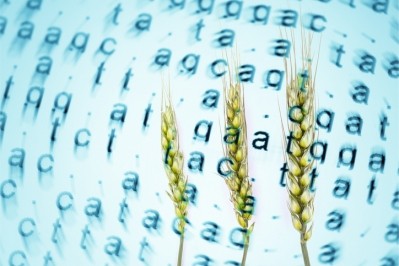RaboResearch: High adoption of gene-edited crop seeds expected in the next five to ten years

Drivers for GE traits in crops include enhanced crop productivity, drought tolerance, improved crop quality, reduced environmental impact, increased sustainability, addressing consumer needs, and finding new market opportunities, according to the bank’s analysis.
It is expected that the adoption rate for GE seeds will surpass 50% within five to ten years, finds the report.
Rabobank sees that expectations for gene edited crops are high, and significant growth in their adoption is projected in the years ahead. “GE technology has the potential to solve issues across the food supply chain for all stakeholders. It can increase crop productivity without expanding farmland area, reduce food waste, reduce harmful substances in food, and reduce pesticide use, among other things,” said Chia-Kai Kang, farm inputs analyst, Rabobank.
Although the exact timeline for the adoption of GE seeds is hard to estimate, it is expected that adoption rates will surpass 50% within five to ten years.
Kang outlined how there are at least five factors that will determine if a GE crop can achieve a high adoption rate: 1) product performance, such as quality, yield, and consistency in performance; 2) possible long-term risks, such as allergic and toxic reactions; 3) disruption to trade flows due to export bans on GE crops; 4) the marketing power, selling strategy, and distribution network of the input company; and 5) access to technology.
Benefits for grain and oilseed indsutry
Arable crops are getting most of the attention, followed by plants not for human consumption, vegetables, fruits, and microorganisms. “GE traits can benefit the entire food supply chain, directly impacting farmers and farm input companies, but also the grain and oilseed industry and consumers,” highlighted Kang.
The US has been the frontrunner in terms of GE applications, as it was with genetically modified organisms (GMO). According to the US Department of Agriculture (USDA), 169 applications for GE products were submitted in the US from 2011 to 2020. These applications covered plants that are for human consumption, feed, industrial uses, and some microorganisms for industry. Some of these applications are expected to be commercialized soon.
Unlike GMOs, which have been in the market for several decades, GE is a recent technology, developed less than ten years ago, said the Rabobank team. “The development of GE brings new technology to the table that involves only editing the existing genes of the plant. This solves one of the major criticisms of GMOs and brings fewer ethical concerns, as well as fewer regulatory constraints in some countries.”
GE legislation in England
The Genetic Technology (Precision Breeding) Act passed into law in England in March this year.
Proponents believe the new legislation will unlock key technologies to improve food security, reduce pesticide use, and enhance climate-resilience in crops. Opponents argue the regulation only benefits the biotech industry.
The rules apply to England only, as Scottish, and Welsh devolved governments do not currently support it. And that regulatory divergence could be a challenge. Though, food produced using precision breeding techniques in England can be legally marketed in Scotland and Wales under the UK Internal Market Act.
Home-grown protein for animal feed
The UK's agri-supply trade association, the Agricultural Industries Confederation (AIC), says the legislation has the potential to bring significant benefits to the environment, producers, the agri-food supply chain, and consumers.
Crops bred using the genetic technology can be made to better withstand the effects of climate change, such as flooding or drought, as well as having a greater resistance to pests and disease, said the body.
Gene editing could help with producing more home-grown protein for animal feed, thereby cutting the UK's dependence on imports, it maintains.
AIC chief executive, Robert Sheasby, said: "This is a significant moment for UK food production. With growing challenges facing agriculture and the environment, AIC is clear that more efficient plant breeding technologies could play an important future role in feeding the nation. While precision breeding is by no means the sole answer to the challenges of climate change and straining food systems, the potential that could be achieved in a variety of agricultural sectors cannot be overlooked. Precision breeding is an opportunity afforded by the UK's EU exit to unlock agri-food innovation, and AIC has worked closely with the government as this legislation was developed to ensure it is workable in practice."
EU strategy
By the end of June 2023 at the earliest, the EU is expected to publish an updated regulatory proposal on new genomic techniques for plants.
Currently, the EU's regulations on gene editing differ from other large agriculture-producing regions in the world, such as the US, Brazil, and Australia. These differences create challenges in the international trade and investment environment, among other things, finds another Rabobank overview.
"A key driver for a possible change in the EU’s current strict regulations includes its own ambitions for more sustainable agriculture, as outlined in the Farm to Fork Strategy. Other drivers for change are climate change and the desire to catch up on innovation with other parts of the world like the US and China. However, concerns about safety and the potential impact of gene-editing technology on the environment could hold back changes."













